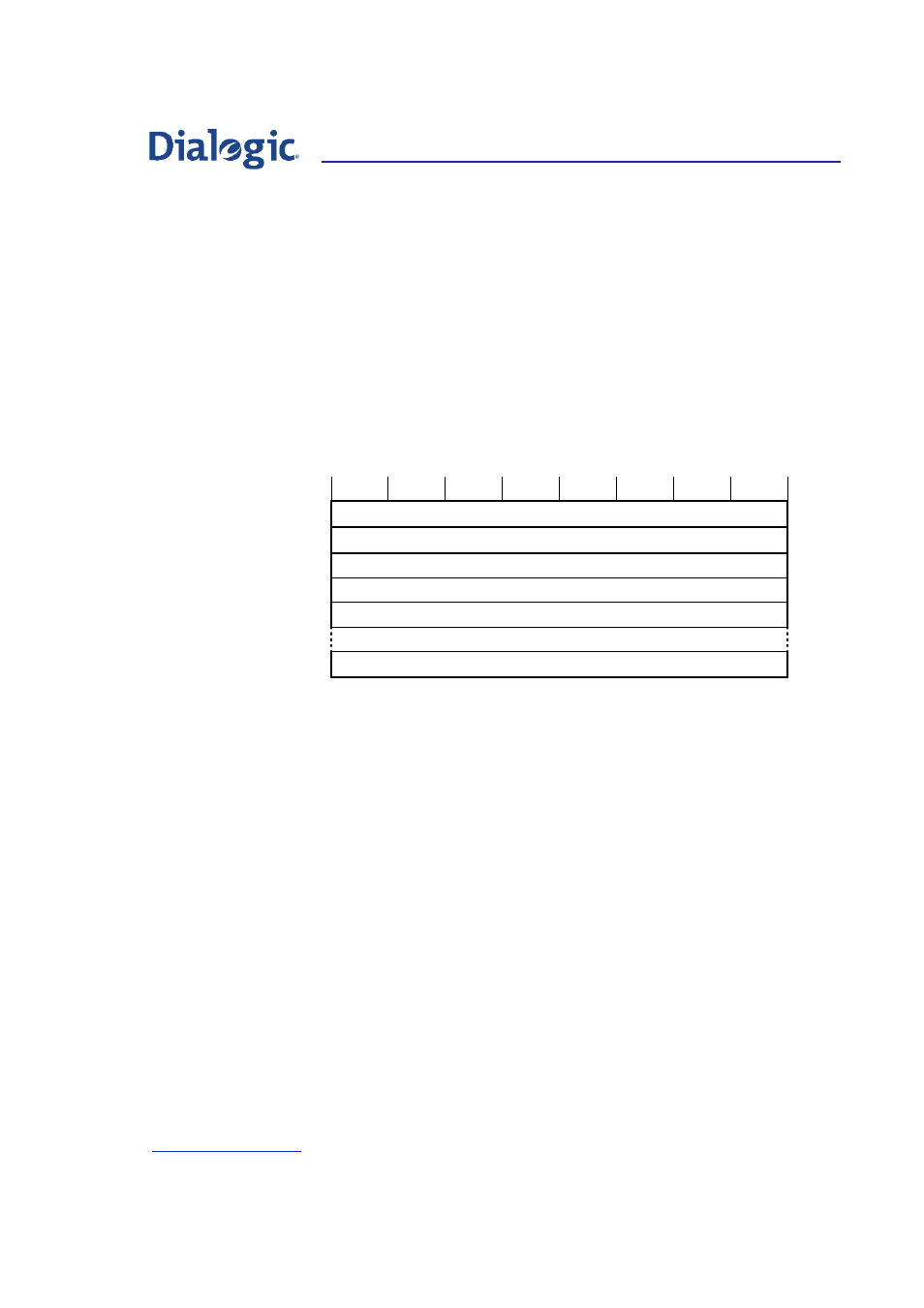8 unrecognised parameter, 8 use of call control primitives, 1 call clearing procedure – Welltech Dialogic SS7 Protocols ISUP User Manual
Page 90: Configuration, Unrecognised parameter, Use of call control primitives, Call clearing procedure, Figure 9, Format of the unrecognised parameter, Section

Section 6 Interface to Application
90
6.7.8 Unrecognised
Parameter
The Unrecognised parameter is used to convey parameter types that are
proprietary or unknown by the ISUP module. The format of the unrecognised
parameter is shown in
. No checking of the data in the
unknown parameter will be performed within the ISUP module.
If a received unknown parameter is to be conveyed, the entire unknown
parameter (the name, length and data) must be encapsulated within the
‘data’ area of the unrecognised parameter. The per-circuit group
ISPGOP_COMPAT option must also be set to an appropriate value to enable
the required handling to be performed when such parameter types are
received by the ISUP module. Refer to
Section
:
for details.
Figure 9.
Format of the Unrecognised Parameter
8 7 6 5 4 3 2 1
Name = 11111001 (249)
Length 3 – 255
1 Parameter
name
2
Length of parameter
3
First octet of data
:
n
Last octet of data
6.8
Use of Call Control Primitives
6.8.1
Call Clearing Procedure
The ISUP module supports a full handshake mechanism during call release.
This is known as the Application Controlled Release mechanism. It ensures
that the ISUP module has received a release action from both the network
and the user before it considers the circuit idle.
This is significant in the case where the network sends IAM on a circuit
immediately after sending clear forward. Early versions of the ISUP module
acknowledged the clear forward with a release guard at the same time as
issuing a Release Indication to the user. In the case of user failure or where
the user was slow in sending a Release Request, the user could
unintentionally release the new incoming call.
The use of the Application Controlled Release mechanism prevents these
problems.
Configuration
The ISPF_ACR and ISPF_NAI options in the module configuration message
must be set to activate the Application Controlled Release mechanism in
ISUP.
